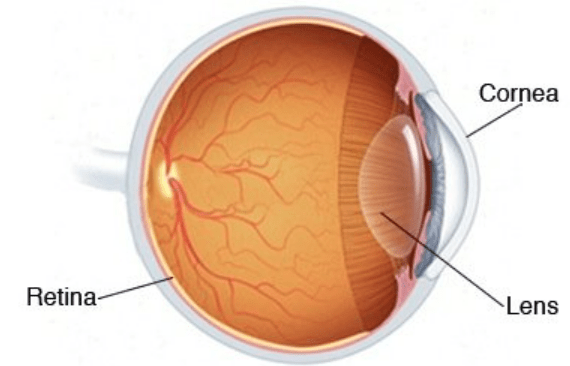Cataract and LASIK Surgery at same time
Before we answer this question, let us first see what the difference between Cataract surgery and LASIK is.
Cataract surgery involves the removal of the lens and placement of an artificial lens while LASIK involves reshaping the cornea.
Before we discuss the nuances of each procedure, let us review the basic anatomy of the eye. As you can see in the picture below, the cornea is the clear, spherical “front” of the eye, analogous to the windshield of a car.
Behind the cornea is the iris, or the colored part of the eye that can open and close depending on the amount of ambient light, and behind the iris is the lens. The cornea and lens focus light onto the retina, which works like the film in a camera, changing light into nerve impulses that travel to the brain.

Thus, we’re born with a clear crystalline lens that works very well when we are young, expanding and contracting to see both far and near without reading glasses. Around the age of 40, the lens becomes more rigid and harder to flex, necessitating reading glasses. With advancing age, the lens gets more rigid and cloudy, and when it becomes mostly cloudy, we call it a cataract. Cataract surgery is an exchange of the cloudy, dysfunctional natural lens with an artificial intraocular lens.
On the other hand, LASIK is an eye surgery in which we use a laser to reshape the cornea and eliminate the need for glasses or contact lenses.
Although both LASIK and Cataract surgery can do wonders to improve your vision, they are different procedures that serve different purposes in vision correction.
What Conditions Does LASIK Treat?
LASIK is laser eye surgery performed to improve the vision of patients who suffer with:
- Myopia or farsightedness
- Hyperopia or nearsightedness
- Astigmatism
You may be a good candidate for LASIK if your vision is stable (no prescription changes in the last two years) and you have healthy eyes.
What Conditions Does Cataract Surgery Treat?
Cataract surgery is designed to treat the clouding of the lens of the eye, which inhibits light from passing through the eye normally.
You may be a good candidate for cataract surgery if you are suffering from hazy or blurred vision caused by the clouding of the lens. Cataracts cannot be prevented and are currently the leading cause of treatable blindness. In general, cataracts are caused by age, however, other causes of cataracts include:
- Trauma to the eye
- Heredity
- Exposure to UV radiation
- Eye disease
- Certain medications
- Medical conditions such as diabetes
How Does LASIK Work?
- LASIK is performed using Excimer Laser to reshape the cornea with cool ultraviolet light. Typically, the amount of corneal tissue removed is smaller than the thickness of a human hair, but it allows for dramatic vision correction—98% of the patients achieve 20/20 vision with a single treatment.
- LASIK procedure only takes about 15 minutes, and the actual laser time per eye is only about a minute each depending on the severity of your prescription. First, a thin corneal flap is created and then it is gently lifted by your surgeon to allow the Excimer laser to reshape the cornea with a computer-controlled laser programmed according to your unique corneal map. After the laser treatment, your surgeon carefully positions the corneal flap back into its original position and light rays can now focus more precisely on your retina for improved vision almost immediately.
How Does Cataract Surgery Work?
Cataracts are treated by removing the natural lens, which has become clouded, and replacing it with an artificial intraocular lens (IOL). There are various options in IOLs which will be discussed by your surgeon after detailed evaluation of your eyes.
Cataract surgery and LASIK are never performed at the same time on a particular eye. Each has its own indications, i.e., reasons for a patient undergoing the procedure. So, if a person has a cataract, they need cataract surgery, not LASIK. If a person does not have a cataract but wants to reduce their need to wear glasses or contact lenses, then LASIK can be considered as an option.
The selection of an intraocular lens (IOL) after cataract surgery can often accomplish the refractive change (vision correction) that one would obtain with LASIK or laser vision correction on the cornea. However, if there is a situation such as astigmatism, which is not planned to be treated at the time of cataract surgery or there is a residual refractive error or refractive surprises after cataract surgery, it can be corrected with laser correction of the cornea such as LASIK, but this should be delayed after the cataract surgery by at least a month or several months. It is not advisable to do these procedures at the same time.
Related Topics:
Can Cataract surgery give 20/20 vision?
Cataract Surgery and Diabetic Retinopathy
Post Cataract Surgery Guidelines








